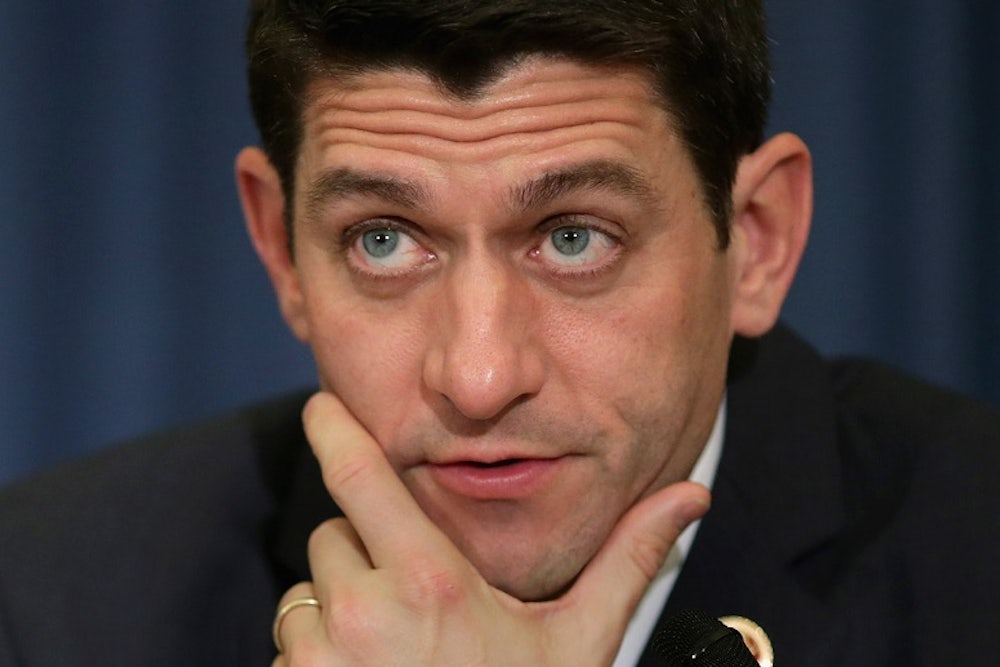Paul Ryan, the chair of the House Budget Committee, is set to make a big move next year. No, I’m not talking about a presidential run, although that’s possible. Instead, he’s expected to take over the chair of the House Ways and Means Committee, which has jurisdiction over tax reform.
That’s a coveted position, but as I argued a few months ago, Ryan has already put himself in a bind by laying out tax principles that make actual tax reform basically impossible. On Thursday, he may have found a way out of this knot—at least on paper.
Here’s Ryan’s issue: He wants to create two tax brackets at 10 and 25 percent, instead of the current seven with a top rate of 39.6 percent. To make up that lost revenue, he says he'll close unspecified tax loopholes. Dave Camp, the current Ways and Means chair, tried this too, but learned that it would require ending politically popular tax breaks like the exclusion for employer-sponsored health insurance and mortgage-interest deduction. There just isn’t the political support to make that happen, and Camp eventually created a 10 percent “surtax” on the 25 percent tax bracket to effectively create a 35 percent bracket. Ryan is going to run into the same problem as long as he insists his plan be revenue-neutral.
On Thursday, Ryan may have announced his solution to this issue: dynamic scoring. When a tax plan is dynamically scored, it includes the macroeconomic effects resulting from the new policies. For instance, a tax plan forecasted to increase economic growth would bring in more revenue. Liberals have long opposed dynamic scoring, because future macroeconomic forecasts are highly uncertain. Conservatives, like Ryan, support it, because it would require them to raise less revenue directly from the tax code, instead relying on the indirect effects of economic growth. “The scorekeeping we use is not correct,” he said Thursday. (The Congressional Budget Office does not use dynamic scoring.)
In principle, dynamic scoring makes sense, but it should be done in a very limited way. Policymakers on both sides expect tax reform to generate additional growth. We shouldn’t ignore that, but we also shouldn’t rely on it heavily. (Smart tax reform would also be revenue-positive, but that’s an argument for a different day.) Too often Republicans have used dynamic scoring as a cover for large tax cuts. At that point, dynamic scoring stops being a way to estimate the effects of tax reform and becomes a budget gimmick. In addition, if we stick with static scoring then any additional revenue generated from economic growth could go towards deficit reduction. Republicans are still worried about the deficit, right?
A bigger concern of dynamic scoring is that Ryan has in the past used unrealistic estimates in his policy proposals. In 2012, he instructed the Heritage Foundation to run a simulation of his budget to determine its macroeconomic effects. Their results were absurdly unrealistic, forecasting the unemployment rate to reach 4 percent in 2015 and below 3 percent in 2021. The last time that happened was in the early 1950s. Yet Ryan touted Heritage’s study in his 2012 budget.
This doesn’t mean that Ryan will use ridiculous economic forecasts to make his tax plan revenue neutral. But if he wants to stick to his tax principles and not increase the deficit, he’s going to have to find some gimmick to make the math work. Dynamic scoring could be it.
